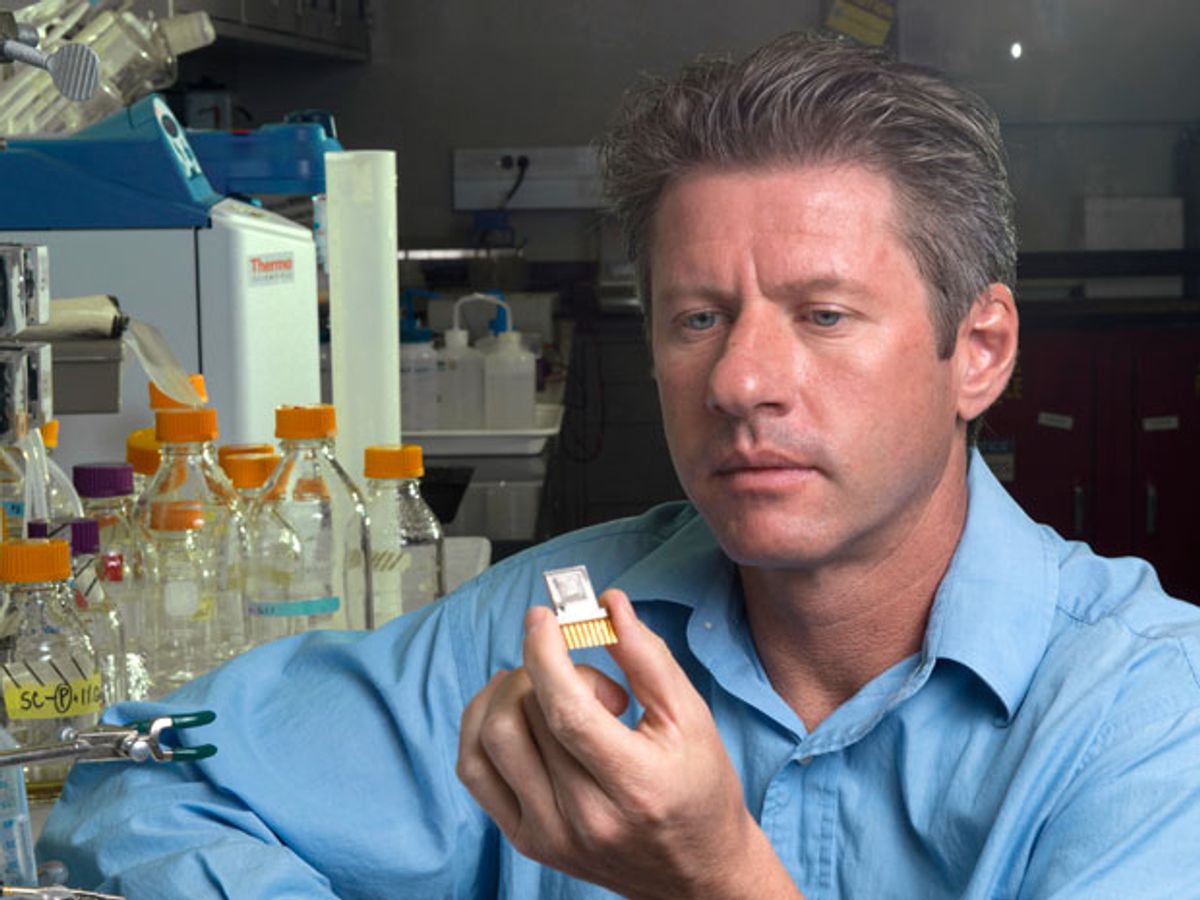The wrist-worn device has nine hollow microneedles to suck colorless fluid from just beneath the skin of the wearer's wrist. Luckily for potential users, it's a painless process that avoids sensitive nerves and only samples the interstitial fluid between skin cells. Sandia National Laboratories worked with the University of North Carolina and North Carolina State University to demonstrate how the microneedles could take up tiny amounts of potassium—one type of electrolyte—and pass the potassium into a fluidic cartridge containing electrodes that can measure the electrolyte levels.
"We want to make the device wearable, noninvasive, and with real-time readout to constantly measure things a doctor might normally order for laboratory tests," said Phil Miller, a graduate student at North Carolina State University, in a press release.
The ability to monitor electrolyte levels is crucial because electrolytes play a key role in maintaining normal body chemistry. They also help convey nerve impulses to the heart and other muscles in the body.
Each needle is just 800 millionths of a meter (microns) long. The nine needles sit above fluidic channels capable of transporting the interstitial fluid to nine electrodes. Individual electrodes can be tailored to selectively detect and measure certain electrolytes such as potassium, sodium, magnesium, calcium and other salts.
Funding for the effort came from Sandia's Laboratory Directed Research and Development program and the U.S. Defense Threat Reduction Agency. Such backing suggests the U.S. military has a strong interest in any personalized health device that can help better monitor soldiers in the field. But the technology also has obvious applications in the civilian world for both professional athletes and ordinary folks heading out to ride their bikes or run.
"This is the future of personalized health care," said Ronen Polsky, a researcher at Sandia National Laboratories in Albuquerque, New Mexico. "These wearable technologies are just starting to come out in different forms. It's inevitable that people will go there."
The same team of researchers has also considered microneedles for other health-monitoring possibilities. For instance, a previous experiment came up with a sensor array capable of using body fluids drawn by microneedles to measure pH, glucose and lactate levels.
Polsky and his colleagues are patenting their current prototype that can analyze different electrolytes while fitting within the palm of a user's hand or on a person's wrist. But a future "sense-respond" device could do much more than just read electrolyte levels—it could also use certain needles to pipe electrolytes into the wearer as needed for replenishing his or her body. That means future athletes or soldiers may not even have to reach for the Gatorade the next time their levels look low.
Jeremy Hsu has been working as a science and technology journalist in New York City since 2008. He has written on subjects as diverse as supercomputing and wearable electronics for IEEE Spectrum. When he’s not trying to wrap his head around the latest quantum computing news for Spectrum, he also contributes to a variety of publications such as Scientific American, Discover, Popular Science, and others. He is a graduate of New York University’s Science, Health & Environmental Reporting Program.



